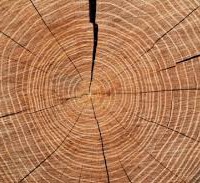What is meant by “Solid Wood moves”??
Posted on September 19, 2014When you buy a piece of solid wood furniture, you are getting a beautiful natural product, with all of its inherent features. One of these features is that solid wood will expand and contract or “Move”, or at least try to move as its environment changes. Generally you let the wood move. You don’t want these forces building up, as you may get undesirable outcomes, like cracking or warping. This is not something you are going to encounter with furniture using man-made materials like veneers since they are so thin and generally have a lot of glue to ‘set’ it. Particle boards are also resistant to movement as they are essentially small particles mixed with glue and formed into a sheet.
Solid wood tries to move in 2 ways. a) To bend and twist (see “But I asked for solid wood furniture, why isn’t the top made of one big piece of wood?”) and b) to expand and contract. We’re only talking small changes here, maybe 1/16” – 1/8”. Just by looking at a solid wood counter top on its own, this isn’t something you would notice. However if you were to glue this top to a cabinet, as a result of this small movement one or more of 3 things may happen: 1. the counter top may buckle or warp; 2. The cabinet itself may be pushed out of shape; 3. the glue bond may be broken and the counter top come off in parts.
When a builder makes a solid wood panel for any piece of solid wood furniture, they want to let the panel “Float”. This allows the wood to expand and contract without being constrained by the rest of the piece of furniture. In practice, this usually means the panels need to be screwed (or hinged) rather than glued to the rest of the frame. How the screws are placed needs to take into consideration both the way in which the panels will expand or contract, and the way to provide the best structural rigidity for the furniture.
For example, consider our Boxwood dining room server, though this is equally true for many smaller pieces of furniture. When the server is built, the cabinet and counter top are built separately. Screws from the cabinet into the underside of the counter top are used to secure the two parts together. This is sufficiently secure so that you could lift the whole unit by the top alone, yet it allows the top to expand over the edge of the cabinet below.
However if you put the server on an uneven surface the floating top counter cannot be relied on to keep the whole piece 100% square. As a result the cabinet below may ever so slightly twist on the uneven floor. This can be seen by the top appearing mildly warped and/or the server doors not lining up: put a shim under the low leg to level the unit and the doors miraculously become level again and the top returns to a true flat surface.
This movement is exacerbated by changes in temperature and more importantly humidity. The humidity needs to be approximately the same throughout the wood as its surrounding environment. As a result it is very important that the wood used for making the furniture in the first place is properly kiln dried to a specific moisture content of between 6% to 8%. (See: “But I asked for solid wood furniture, why isn’t the top made of one big piece of wood?”).
For example when you get wood floors installed in your home, the flooring is usually left in your home for a couple of days before installing, so it can acclimatize to the humidity and temperature of your home.
When we build furniture for clients in drier parts of Canada (we’re in southern BC, so that’s pretty well anywhere else), we ensure the wood is further dried before starting to work with it.
A clear example where not allowing the wood to adjust in humidity before building furniture can be seen with many solid wood tables imported from Asia. Once the wood arrives in Canada, with its much drier climate, the wood shrinks. Then you get cracks forming in the table tops.
In short, the wood is going to try and expand and contract, thus ‘move’ due to the difference in temperature and moisture content of the furniture and its surroundings. In the winter if you keep your heat turned up, the wood will contract, during the rainy season, the wood will expand. To ensure these substantial forces do not affect the appearance and structural integrity of your furniture, furniture needs to be built to allow this movement.
BACK
